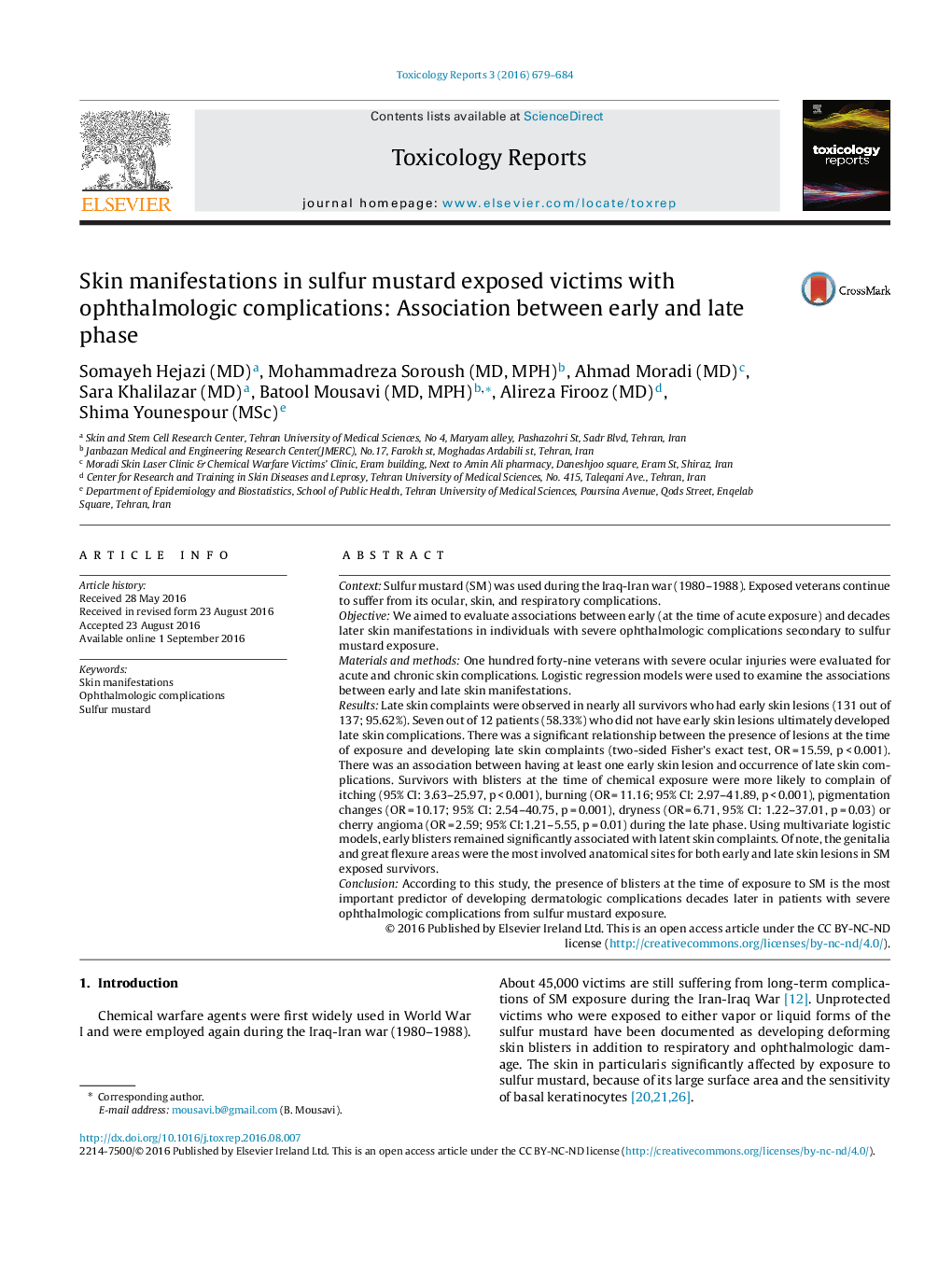| کد مقاله | کد نشریه | سال انتشار | مقاله انگلیسی | نسخه تمام متن |
|---|---|---|---|---|
| 2572178 | 1561191 | 2016 | 6 صفحه PDF | دانلود رایگان |
ContextSulfur mustard (SM) was used during the Iraq-Iran war (1980–1988). Exposed veterans continue to suffer from its ocular, skin, and respiratory complications.ObjectiveWe aimed to evaluate associations between early (at the time of acute exposure) and decades later skin manifestations in individuals with severe ophthalmologic complications secondary to sulfur mustard exposure.Materials and methodsOne hundred forty-nine veterans with severe ocular injuries were evaluated for acute and chronic skin complications. Logistic regression models were used to examine the associations between early and late skin manifestations.ResultsLate skin complaints were observed in nearly all survivors who had early skin lesions (131 out of 137; 95.62%). Seven out of 12 patients (58.33%) who did not have early skin lesions ultimately developed late skin complications. There was a significant relationship between the presence of lesions at the time of exposure and developing late skin complaints (two-sided Fisher's exact test, OR = 15.59, p < 0.001). There was an association between having at least one early skin lesion and occurrence of late skin complications. Survivors with blisters at the time of chemical exposure were more likely to complain of itching (95% CI: 3.63–25.97, p < 0.001), burning (OR = 11.16; 95% CI: 2.97–41.89, p < 0.001), pigmentation changes (OR = 10.17; 95% CI: 2.54–40.75, p = 0.001), dryness (OR = 6.71, 95% CI: 1.22–37.01, p = 0.03) or cherry angioma (OR = 2.59; 95% CI:1.21–5.55, p = 0.01) during the late phase. Using multivariate logistic models, early blisters remained significantly associated with latent skin complaints. Of note, the genitalia and great flexure areas were the most involved anatomical sites for both early and late skin lesions in SM exposed survivors.ConclusionAccording to this study, the presence of blisters at the time of exposure to SM is the most important predictor of developing dermatologic complications decades later in patients with severe ophthalmologic complications from sulfur mustard exposure.
Journal: Toxicology Reports - Volume 3, 2016, Pages 679–684
